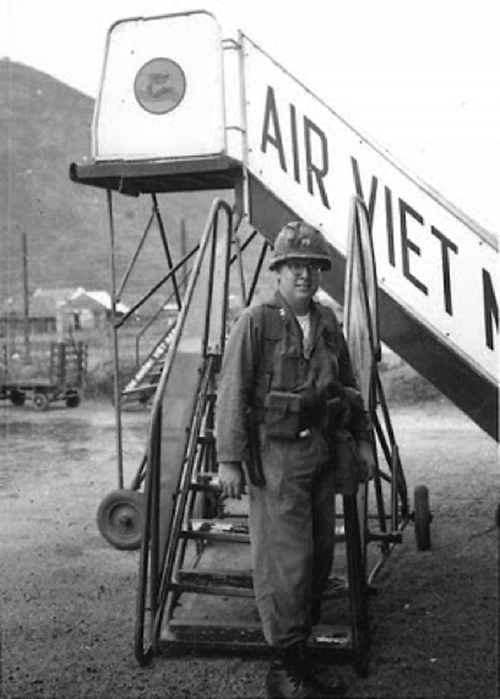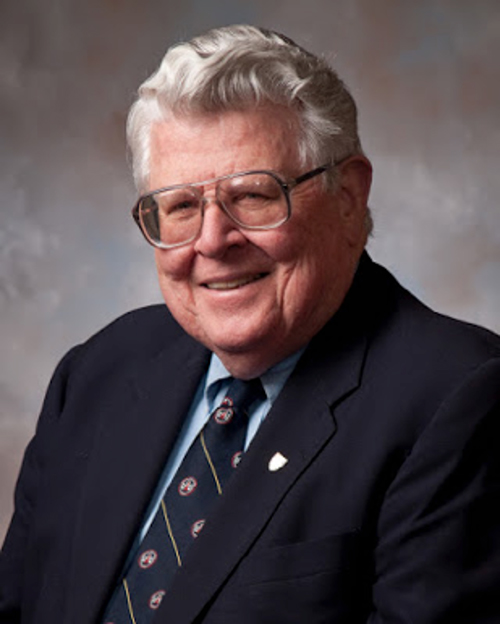Reparing veins and saving lives, while giving birth to modern venous surgery: lesson from the icon inside and outside the operating room
Sergio Gianesini
Vascular Diseases Center, University of Ferrara, Italy.
Correspondence: Sergio Gianesini, Vascular Diseases Center, University of Ferrara, Italy, e-mail: sergiogianesini@gmail.com
In San Diego, last October 24, the American College of Surgeons recognized dr. Norman Rich as Icon in Surgery, in honor of his outstanding contributions to the field of Surgery.
Considering the legendary resume of this pioneer of modern vascular surgery, rarely such recognition has been assigned more properly.

Dr. Norman Rich in Vietnam in 1965 (from ‘the pulse’, https://usupulse.blogspot.it/2017/11/dr-norman-rich-named-icon-in-surgery.html)
Indeed Norman Rich, MD, now a retired General of the United States of America Army and founding Chair of the Uniformed Services University of the Health Science Department of Surgery, served as chief of Surgery at the 2nd Mobile Army Surgical Hospital (MASH) unit during the Vietnam war in 1965.
Even if just recently specialized, at that time Dr. Rich was able to significantly innovate war surgery, focusing on vascular trauma restoration.
The expertise and technical advancement he developed saved a countless number of soldiers from amputation and created the fundamentals for modern vascular surgery.
History teaches us that often Medicine, and in particular Surgery, before a war is significantly different from the one practiced after the conflict ends.1
Indeed, as tragic as a war can be, by representing an epidemic of trauma it provides the need to move forward in the management of severe injuries.
The expertise gained from World War II led to the creation of those Mobile Army Surgical Hospitals where dr. Rich served during the Vietnam war.
Dr. Norman Rich is now recognized as the man who brought the expertise gathered by the colleagues during the Korean conflict to a new age in vascular injury management, with a particular focus on venous reconstruction.
In those years the introduction of helicopters significantly changed the fate of limbs previously easily addressed toward amputation.

Dr. Norman Rich.
The reduction in transportation time surely facilitated the rapid intervention of an experienced equipe operating in a proper setting rather than on the battlefield.
At the same time the evolution of the weaponery created such devastating lesions to increase extremities injuries by 300% versus World War II.2
The expertise gathered on the field is so significant that, in 1966, it led the same dr. Rich to start the famous Vietnam Vascular Registry, a still ongoing precious database reporting more than 10,000 cases treated by surgeons involved in war vascular trauma.
If we look back at the historical battles we understand how the last 50 years determined such an advancement in vascular trauma management.
Indeed, for more than 2000 years, the focus has been just hemorrhage control by packing and bandaging.
Yet the same Galen already stressed the importance of identifying an arterial rather than venous bleeding.3
Although the expertise gathered during the following centuries was translated into several techniques to repair vessels, up to World War II ligation was the preferred management of whatever bleeding.
During the Korean conflict, huge pioneers like Huges, Spencer and few others demonstrated the possibility of predicting successful outcome in vascular repair near the battlefield in less than ideal settings.
Dr. Rich took this heritage, expanded it and donated it to all the vascular world and to both the military and civilian patients who have benefitted from such expertise of this new vascular surgery age.
Last but not least, as usually said, a Surgeon value is measured by the words of his/her disciples and today literally an army of top quality surgeons, from the Norman Rich Department of Surgery of the USUHS University in Bethesda to all the rest of the world, recognizes Dr. Rich as the living legend who has taken such an active part in modern surgery birth and education.
References
- Barr J. Evolution of surgical repair of the arteries in war and peace, 1880-1960. New Haven, CT: Yale University; 2014. Available from: http://www.proquest.com/products-services/dissertations/ Accessed: April 20, 2015.
- Burkhalter W. Surgery in Vietnam: orthopaedic surgery. Washington, DC: OTSG Department of the Army; 1994.
- Rich NM, Rhee P. An historical tour of vascular injury management: from its inception to the new millenium. Surg Clin North Am 2001;81:1199-215.
[TOP]


